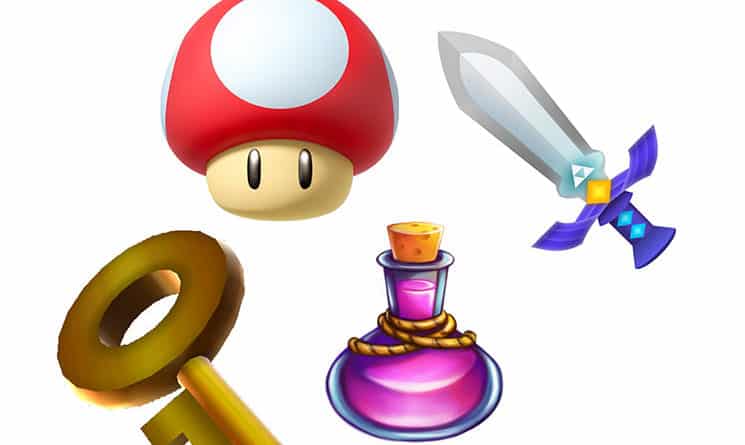Rediscovering video games of the past
The power-up item has always been an essential part of every video game adventure. Score a power pellet, hammer, or a can of spinach and your enemies will tremble before you. But like a fine radioactive wine hidden behind a fake wall in a secret dungeon, video game power-up items have only become stranger over time.
Credit card “Kid Icarus” (1986, Nintendo)
The credit card in “Kid Icarus” is akin to adding an emoji to the “Mona Lisa” — a stain on perfection. Hey kids! Want to learn about lines of credit and crippling debt? Just defeat the God of Poverty and you’ll be pre-approved for the Angel Land credit card! Start buying harps and mallets you can’t afford and go into financial ruin before defeating Medusa!
Holy water “Castlevania” franchise (1986-present, Konami)
The holy water follows a disturbing psychological power-up trend found in many video games: the “take this reward, but get punished for taking it” approach. In a series famous for whipping away its problems, it’s the small glass jar full of blessed water that packs the purest punch. The catch? You have to throw it at an awkward, often impossible, arc.
Cloak of Darkness “Wizards and Warriors” (1987, Acclaim)
What if I told you there was a power-up that grants you invisibility in your quest to defeat evil wizard Malkil? Great, you’d say! But what if I also told you this magic cloak only makes you invisible on screen, and that your enemies, including evil bats, will still attack you and tear at your flesh? Are you still interested in this, the worst power-up of all time? Probably not.
Flame gun “Contra” (1987, Konami)
A gun that shoots fire?! How could you say no to that? Very easily. “Flame gun” oversells the power-up; a more appropriate name would be “small concentric fuzzy circle hot glue gun.”
Capsule “Monster Party” (1989, Bandai)
The gameplay of the famously bonkers “Monster Party” hinges on protagonist Mark popping pills — excuse me, “capsules” — in order to trade in his wooden bat and normal human strength for that of Bert, a chartreuse alien bird gargoyle with laser eyes. This is the most normal aspect of the game.
Top Spin “Mega Man 3” (1990, Capcom)
In a series celebrated for its inventive power-ups, it was only a matter of time until a dud popped up. Enter the Top Spin, which allows Mega Man to joyously jump spin into enemies, causing minimal harm to foes and actual damage to Mega Man.
Pal Pills “Super Paper Mario” (2007, Nintendo)
Half power-up, half psychological hang-up, the Pal Pills that debuted in “Super Paper Mario” are the strangest power-up in a franchise that has turned its hero into a frog, a ghost, and a tanooki. Looking for an extra boost? Just take these pills. The hallucinations begin immediately. You are surrounded by eight clones of your younger self — eight 8-bit selves, fresh and full of promise. Become one with yourself. With all of yourselves. Now use these eight avatars of innocence as human shields, watching as each of them tragically dies to save you, their future self. Have fun?

